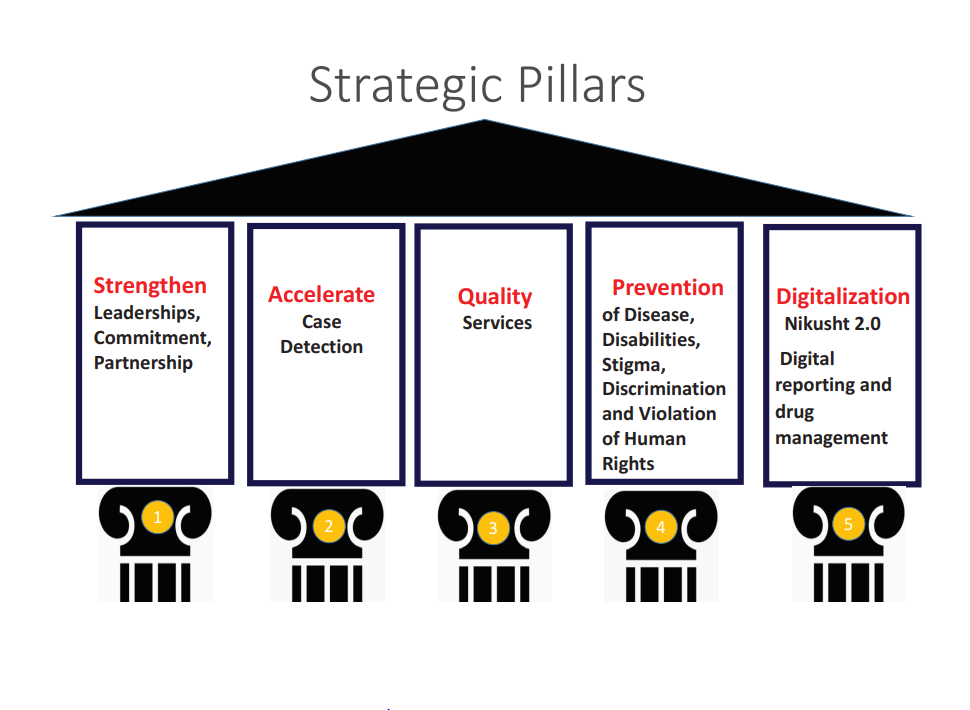National Strategic Plan (NSP) 2023 – 2027
The National Strategic Plan and Roadmap for Leprosy 2023–2027 serves as India’s forward looking framework to achieve interruption of leprosy transmission at the district level by 2027. Developed in consultation with national experts, WHO, and key stakeholders, the plan aligns with the WHO Global Leprosy Strategy 2021–2030 and reflects India’s commitment to the Sustainable Development Goals (SDGs). The NSP promotes a patient-centric, rights-based approach to leprosy control and elimination. It is anchored on five strategic pillars:
Leadership, Coordination, and Partnerships: Focuses on strengthening political commitment, inter-sectoral collaboration, and accountability at national, state, and district levels to ensure cohesive programme implementation.
Accelerated Case Detection: Emphasizes proactive case finding through Active Case Detection Campaigns (ACDC), contact tracing, Focused Leprosy Campaigns (FLC), and integration with other health programmes to identify cases early and interrupt transmission.
Comprehensive, Quality Leprosy Services: Ensures universal access to free diagnosis, treatment (MDT), disability care, reconstructive surgery, counseling, and post-treatment support through the general health system.
Prevention of Disease, Disabilities, and Discrimination: Aims to prevent Grade II disabilities and reduce stigma through Post-Exposure Prophylaxis (PEP), disability prevention strategies, community engagement, and behavioral change communication
Robust Surveillance and Health Information Systems: Strengthens digital platforms like Nikusth 2.0, enables real-time case tracking, and supports data-driven planning, monitoring, and reporting across all administrative levels.

